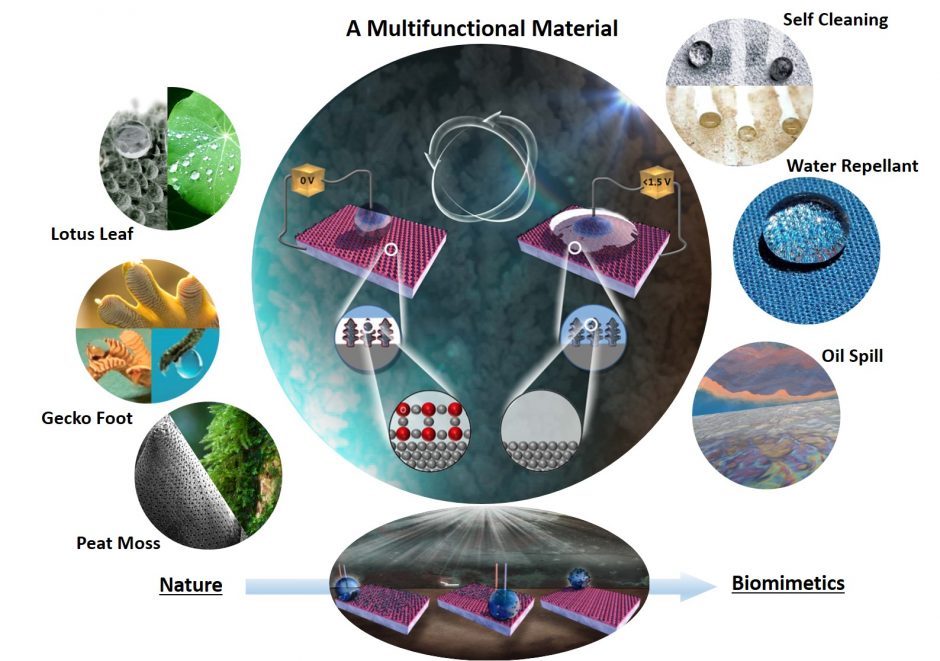
New research by UBC’s Clean Energy Research Centre has made the cover of Wiley’s most recent issue of Advanced Materials Interfaces. The article, which was co-written by Beniamin Zahiri, Pradeep Kumar Sow, Chun Haow Kung and Walter Mérida, discusses fast and reversible control over surface wetting properties–from superhydrophobic (water-repellant) to superhydrophilic (water-attractive) using a small voltage that could be supplied by conventional batteries. The elegance of the approach lies in the simplicity, preciseness and reversibility of the wetting manipulation. The smart material offers the flexibility and versatility to be applied in a number of applications, such as self-cleaning surfaces, smart filtration and microfluidic devices.
In nature, there are three different types of surface interactions with water: self-cleaning (e.g. lotus leaf), high adhesiveness (e.g. gecko foot) and water absorbing (e.g. peat moss). Scientists have found that such variation arises from the nanoscale features of these surfaces. Over the past decade, engineers and scientists in the field of biomimetics have developed self-cleaning glasses, water-repellent fabrics and oil-water separators for ocean cleanup. Dr. Mérida’s team has now created a smart surface using the inexpensive and controllable process of electrodeposition. The team found that by coating a surface with a thin (< 5 nanometer) layer of copper oxide and applying a low voltage (< 1.5 V, which can be provided by a standard battery), the thin oxide could be transformed into pure metallic copper, and the way the surface interacts with water could therefore be altered. During the transformation, the surface transitioned from lotus-type, to gecko foot-type, to the fully absorbent peat moss-type. This is the greatest range of transition that has ever been observed for a metal/metal oxide surface, and the rate and extent of the transition can be fully controlled.

These results have enabled a new field of research based on smart surfaces with metal oxides and nanoscale geometries. The team’s research shows that a small water droplet can be manipulated to collect solid particles on the surface (in lotus leaf mode) and deliver them to a specific location by applying voltage (in adhesive gecko foot mode). Such precise manipulation is important for biomedical applications where finite number of solid particles need to be mixed. The concepts illustrated by this work are also useful in the field of microfluidics, where control over the flow rate on a small scale can be achieved by changing the wetting properties of the flow channels.
The full article can be found here: http://onlinelibrary.wiley.com/doi/10.1002/admi.201700121/full
This research has also been featured in EurekAlert!, a publication by the American Association for the Advancement of Science: http://www.eurekalert.org/pub_releases/2017-07/uobc-sse072517.php